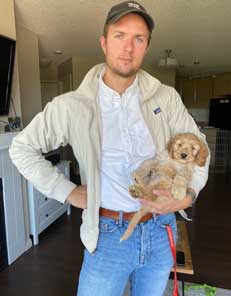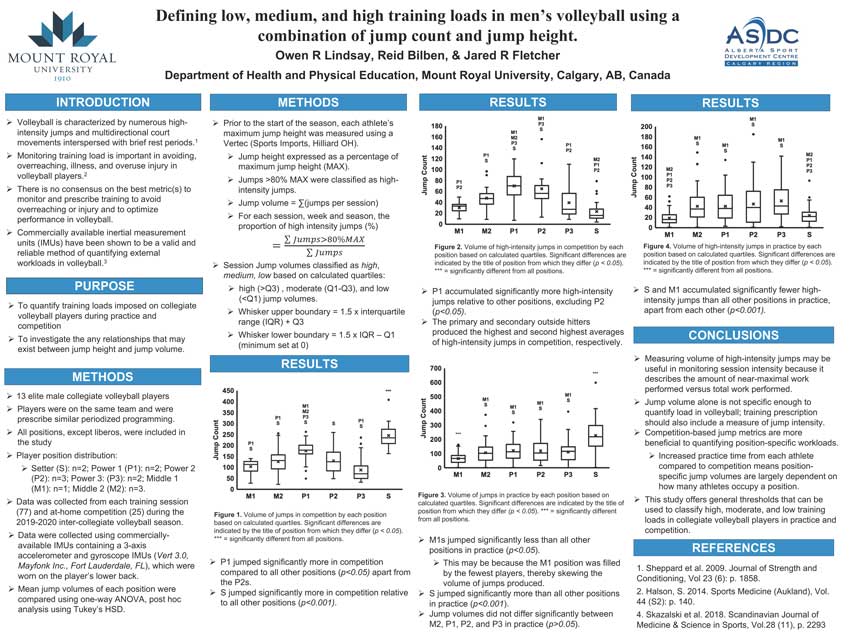
Owen Lindsay, BHPE — Physical Literacy
SSHAPE President, 2019–20
Since my graduation from Physical Literacy, I’ve started my graduate studies in the faculty of Kinesiology at the University of Calgary. My current research project is aimed at validating a vibration-emitting wearable technology used to assess clinical skin sensitivity. Alongside my supervisor at the UCalgary, I will assess skin sensitivity of healthy and diseased populations using wearable insoles in an attempt to replace current (and imprecise!) measures used by clinicians. Beginning in early January, I will also be facilitating an Advanced Neuroscience Lab section as a teaching assistant. In this lab, I will be delivering tutorials in topics relating to neuroscience and statistical techniques. Most importantly though, I will be continuing research at MRU under the supervision of Dr. Jared Fletcher. Our research will serve to quantify workload measures and jump mechanics of collegiate volleyball players. We hope to continue conducting research on our Cougar athletes during the COVID-19 pandemic to ensure they are in tiptop shape when they get back into action!
CSEP Poster 2020
Defining low, medium, and high training loads in men’s volleyball using a combination of jump count and jump height
O.R. Lindsay1, R. Bilben2 J.R. Fletcher1
1Department of Health and Physical Education, Calgary, AB T3E 6K6, Canada
2Alberta Sport Development Centre, Calgary, AB T3E 6K6, Canada
Quantifying training load in collegiate volleyball players has important implications with regards to prescription of training volume and intensity, and competition performance. In volleyball, player position-specific training loads have been described previously from jump volumes, but position-specific differences in jump intensity have yet to be quantified. We aimed to quantify training load using both jump volume and intensity using inertial measurement units (IMU) worn by 13 male collegiate volleyball players during each practice and at-home competition throughout the 2019-2020 season. The IMUs recorded jump height for each player. Jump volume and intensity were quantified by jump count and jump height (expressed as %maximum), respectively. Training load was quantified based on a combination of volume and intensity. Low, medium and high jump count for each position was calculated based on quartiles of jump counts during competition and expressed as median and range. An interquartile range of 161.5 (88.5-182.75) jumps from secondary powers was the largest spread recorded from competition averages, followed by 231 (204-275) from setters, 112 (93-151) from secondary middles, 75 (57-108) from auxiliary powers, 110 (86-121) from primary middles, and 191 167.5-198.5) from primary powers. Our analysis revealed that setters jumped significantly more than all other positions in competition (p<0.001) but accumulated significantly less high-intensity jumps (p<0.05). Primary power hitters jumped significantly more than other positions in competition, with the exception of setters (p<0.05). Primary and secondary power hitters accumulated significantly more high intensity jumps relative to the other positions (p<0.05). With the exception of secondary middles, competition jump volumes differed significantly from training jump volumes (p<0.0001). Our findings suggest that jump count can be used to define individual, position and team training loads both in practice and during competition. We also present the interquartile range for all positions throughout a competitive volleyball season to allow better training prescription to coaches and practitioners. Future research will investigate how different methods of quantifying training load impact competition performance, self-reported player fatigue and incidence of injury during a competitive volleyball season.


